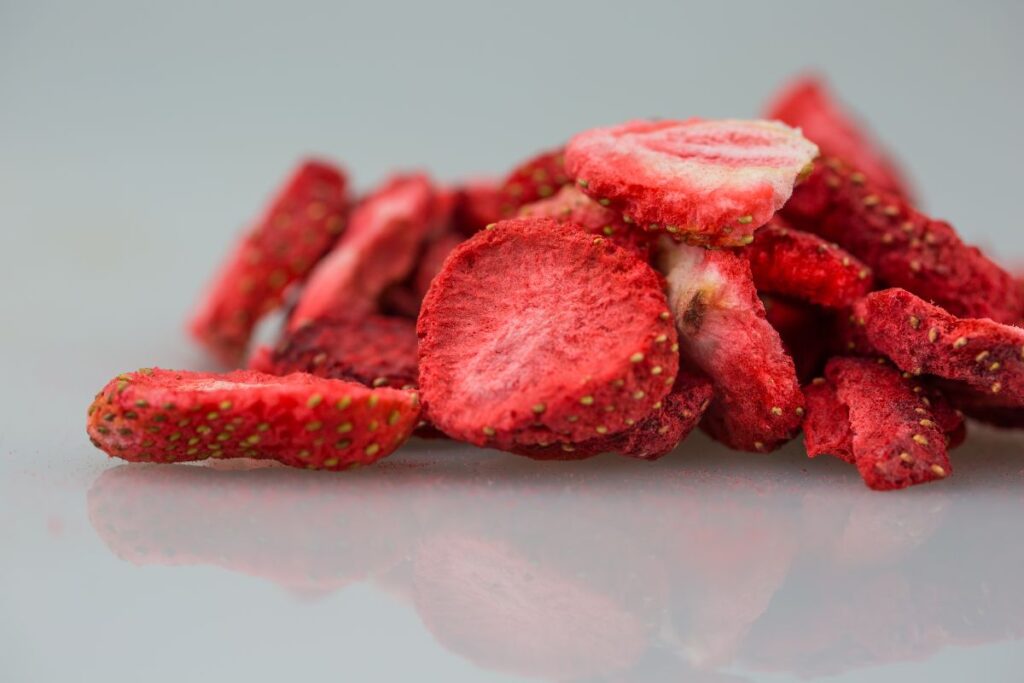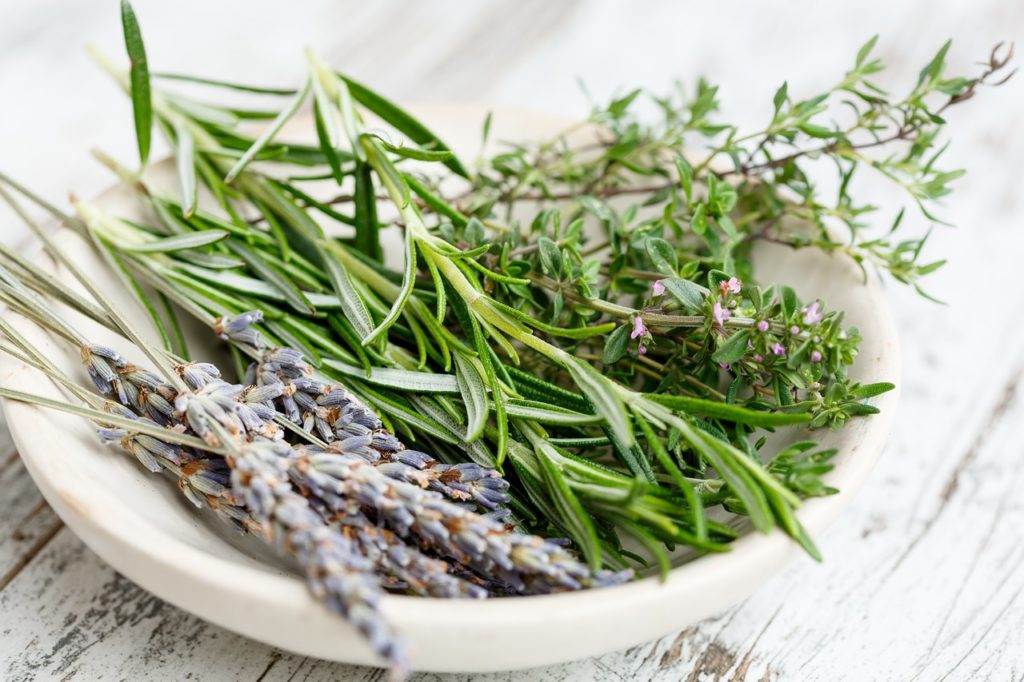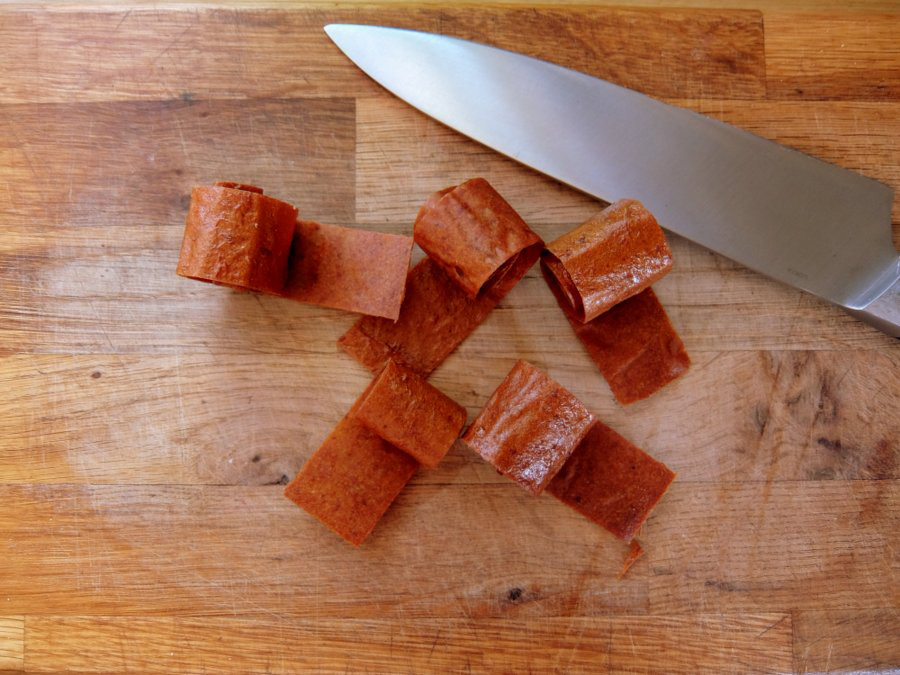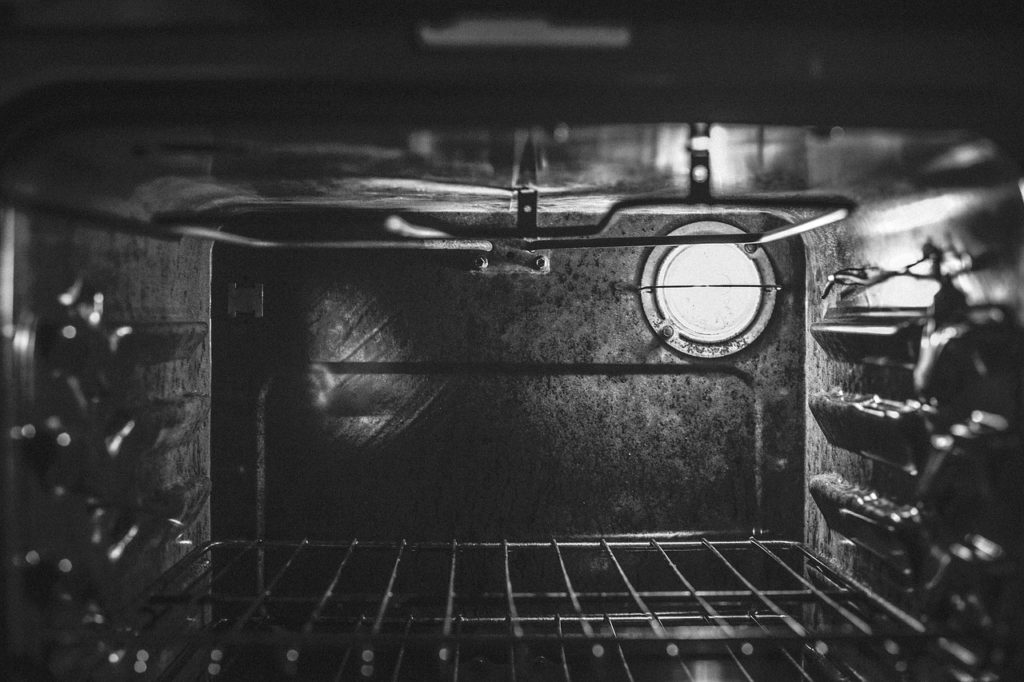How do you get results like those dehydrated fruits you can buy in a store? Often the texture and colour of home-dried fruits are different and a lot of this is to do with pretreating the fruit before drying.
Pretreating fruit before dehydrating is very simple but can drastically change the appearance, texture and flavour of the finished product.
It is not always a necessary step but depending on the fruit being dehydrated pretreating can really make a huge difference for a tiny bit more effort.
Table of Contents
What Is Pretreating?
In a sense you have to pretreat any fruit before dehydrating it because all fruit needs to be cleaned, sorted and sliced to a certain thickness before drying. This is preparing the fruit or vegetable
When we talk about pretreating fruit before drying we are referring to one of several processes that will alter the structure, texture or sweetness of the fruit.
Some fruits benefit from being pretreated other fruits don’t require pretreatment but it can be an optional extra.
Why Do Some Fruits Need Pretreating Before Drying?
The reason some fruits benefit from pretreating is because of the enzymes contained within them.
Enzymes are the catalysts for seeds to sprout, fruits to ripen and mature and eventually for the fruit to over-ripen and spoil.
As we know some fruit continue to ripen after they are picked. This is because enzymes within the fruit are still working. This is fine if the fruit is just ripe but if you leave the fruit too long it becomes soft, and mushy and eventually spoils.
Drying fruit doesn’t necessarily stop these enzymes which can continue to work even after dehydration. This is where pretreating comes in, almost all the methods of pretreating fruit will stop these enzymes and also there are some methods of pretreating that are designed to boost flavour.
Pretreating fruits and vegetables will nearly always extend the amount of time you can store the dried foods without any significant changes in colour, flavour and texture.
Many vegetables will change their texture and become stronger flavoured when stored if they haven’t been pretreated.
There are also some fruits such as blueberries that really need to be pretreated by blanching in order to break the waxy skin which if left intact would prevent thorough drying.
Methods Of Pretreating Before Dehydrating.
There are several methods of pretreating and the best method to use will depend on what you are dehydrating. Let’s take a look at each.
Blanching
Blanching the produce can be split into the following categories.
They all utilise heat just long enough to halt enzymes or as mentioned above, break the skin of the fruit to allow proper drying.
- Water Blanching
- Steam Blanching
- Syrup Blanching
Water Blanching
Water blanching involves a regular pot. Fill it with a large quantity of water so that when you immerse the fruit in the water it doesn’t take too long to return to a boil.
Blanch for as long as your recipe indicates which could be 1 – 3 minutes and then remove the fruit or vegetables and drop them into ice water to quickly halt the cooking.
The fruit or vegetables can then be dried and you can start the drying process.
Steam Blanching
Steam blanching works in the same way as water blanching but is better for more delicate foods that might break up in a water bath.
Steamer baskets over the top of a pan work really well but you often have to work in batches as the steamer can only hold so much produce at a time.
As with water blanching, you will want to cool the prepared fruit or vegetables in an ice water bath straight after steam blanching to stop them from cooking.
Steam blanching may take a minute or two more than water blanching.
Syrup Blanching
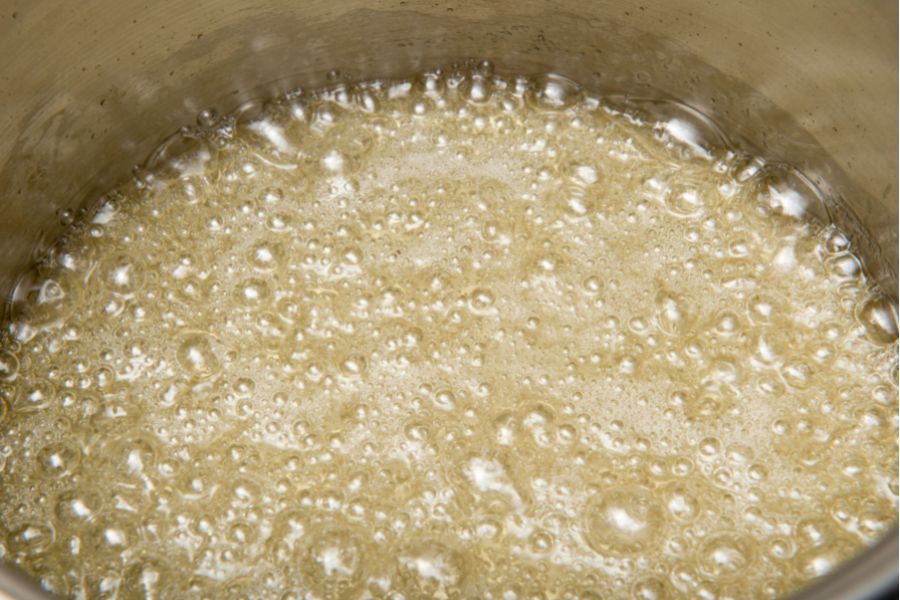
Using syrup to blanch your fruit as a pre-treatment alters the flavour and texture of the finished fruit.
Adding sugar, of course, will make everything sweeter but it also gives the fruit a softer, chewier texture after drying.
Sugar is also a preservative in its own right and helps draw moisture out of the fruit.
To prepare a syrup you want to combine 300g of sugar with 600ml of water, or 1 part sugar and 2 parts water by weight.
Bring this to a boil to dissolve the sugar and this amount of syrup is enough to blanch up to 400 grams of fruit at a time. The syrup can be used up to 3 times meaning you can syrup blanch around 1.2kg of fruit with this batch of syrup.
Dips and Soaks
The next methods of pretreating fruit don’t involve heat but rely on soaking or dipping the fruit or vegetable in a solution that predominantly will prevent browning but also has preservative qualities that extend the storage life of the dried food.
Acidulated Water Soak
Acidulated water can be as simple as lemon juice diluted in water but can be implemented with other acids.
The process of soaking fruit in acid slows discolouration but often won’t prevent it completely.
Think of apples that when cut will brown within an hour. Treating fruit with acidulated water this slows the process of browning by oxidation meaning your dried fruit retains its colour for longer in storage.
There are 3 main types of acids to make acidulated water for drying and they are:
- Lemon Juice, freshly squeezed or bottled lemon juice can be made up with around 250ml per litre of water.
- Citric Acid in powdered form from health food stores or home brew suppliers works the same as lemon juice but requires just 1.5 teaspoons per litre of water so is a lot more effective
- Ascorbic Acid in powdered form is available from health food stores or home brew stockists. will need 3 teaspoons per litre of water to pretreat your fruits and vegetables for dehydration.
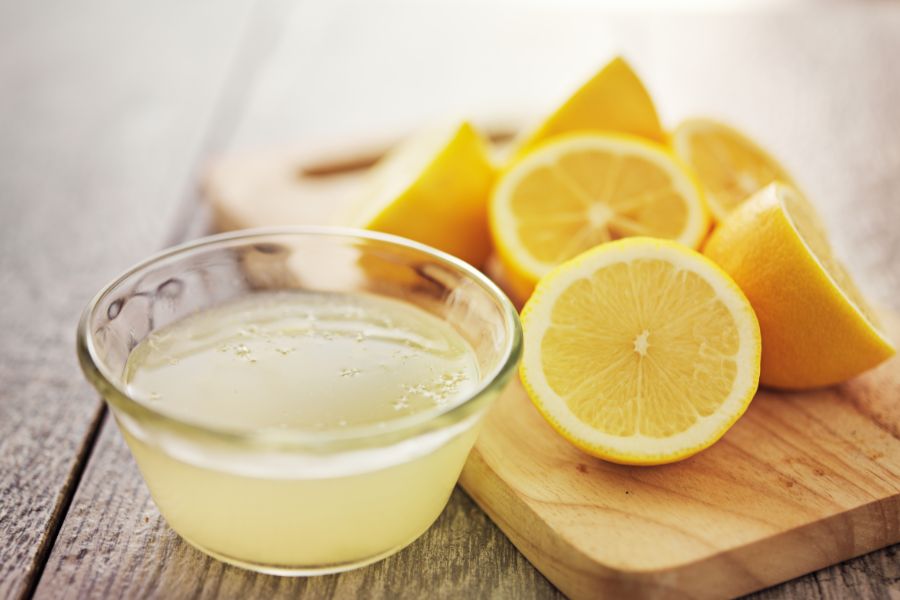
The quantities listed above and is enough to dramatically slow browning and don’t need to be rinsed off.
Acidulated water is usually used to pretreat; apples, apricots, bananas, peaches, pears, potatoes and turnips.
To treat your fruits and vegetables in acidulated water simply soak the prepared slices for 5 – 10 minutes before removing and patting them dry. The quantities above can be used for 2 – 3 batches of produce before new acidulated water needs to be prepared.
Pretreating In A Sulfite Solution
Sulphur dioxide will keep dried fruit softer and retain the fruit’s colour after drying really well.
Using a sulphur solution is one of the most effective ways to pretreat fruits before drying and is very commonly used to treat dried fruits you buy from the supermarket.
Sulphur can be an allergen or the cause of sensitivities so should be avoided if this would affect you.
Commercial dried fruit produces treat the fruit with sulphur dioxide gas before drying but in a home environment, a soak is much easier.
To create a sulfite solution you will need to order sodium metabisulfite from a homebrew supplier or online. Ensure it is sodium metabisulfite for wine-making purposes.
To prepare the sulfite solution add 2 teaspoons to 1 litre of water. Fruit can then be soaked for 4 minutes and then removed with a slotted spoon and patted dry.
The prepared solution can be used for up to 4 batches at a time but cannot be stored so must be used on the same day.
Typically, apricots, apples, raisins, pears and peaches are treated with sulphur but many more store-bought fruits are treated this way.
Always mark dried fruit that has been sulphured so if you give it away to somebody they are aware there is a possible allergen.
